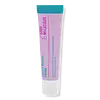What's inside
What's inside
 Key Ingredients
Key Ingredients

 Benefits
Benefits

 Concerns
Concerns

 Ingredients Side-by-side
Ingredients Side-by-side

Water
Skin ConditioningC13-16 Isoparaffin
SolventGlycerin
HumectantDiheptyl Succinate
EmollientHeptyl Undecylenate
Emollient1,2-Hexanediol
Skin ConditioningAmmonium Acryloyldimethyltaurate/Vp Copolymer
Polyglyceryl-10 Oleate
Skin ConditioningPropanediol
SolventVitis Vinifera
MaskingVitis Vinifera Seed Oil
EmollientCaprylic/Capric Triglyceride
MaskingBakuchiol
AntimicrobialTocopherol
AntioxidantAcmella Oleracea Extract
Skin ProtectingButylene Glycol
HumectantRetinol
Skin ConditioningAllantoin
Skin ConditioningHelianthus Annuus Seed Oil
EmollientCapryloyl Glycerin/Sebacic Acid Copolymer
Skin ConditioningEthylhexylglycerin
Skin ConditioningSalix Alba Bark Extract
AstringentCamellia Sinensis Leaf Extract
AntimicrobialLilium Candidum Bulb Extract
Skin ConditioningWater, C13-16 Isoparaffin, Glycerin, Diheptyl Succinate, Heptyl Undecylenate, 1,2-Hexanediol, Ammonium Acryloyldimethyltaurate/Vp Copolymer, Polyglyceryl-10 Oleate, Propanediol, Vitis Vinifera, Vitis Vinifera Seed Oil, Caprylic/Capric Triglyceride, Bakuchiol, Tocopherol, Acmella Oleracea Extract, Butylene Glycol, Retinol, Allantoin, Helianthus Annuus Seed Oil, Capryloyl Glycerin/Sebacic Acid Copolymer, Ethylhexylglycerin, Salix Alba Bark Extract, Camellia Sinensis Leaf Extract, Lilium Candidum Bulb Extract
Water
Skin ConditioningGlycerin
HumectantCyclohexasiloxane
EmollientHydrogenated Polydecene
EmollientNiacinamide
SmoothingButyrospermum Parkii Butter
Skin ConditioningMacadamia Integrifolia Seed Oil
Skin ConditioningPropanediol
SolventCetyl Alcohol
EmollientLaminaria Japonica Extract
Skin ProtectingEclipta Prostrata Leaf Extract
Skin ConditioningCentella Asiatica Extract
CleansingFicus Carica Fruit Extract
HumectantPiper Methysticum Leaf/Root/Stem Extract
Skin ConditioningPanax Ginseng Berry Extract
Skin ConditioningHydrogenated Lecithin
EmulsifyingElaeis Guineensis Oil
EmollientPolyglyceryl-2 Stearate
EmulsifyingPolyacrylate-13
Glyceryl Stearate
EmollientBehenyl Alcohol
EmollientPolyglyceryl-10 Laurate
Skin ConditioningDimethicone/Vinyl Dimethicone Crosspolymer
Skin ConditioningCetearyl Olivate
Sorbitan Olivate
EmulsifyingStearyl Alcohol
EmollientPolyglyceryl-10 Myristate
Skin ConditioningBHT
AntioxidantSodium Stearoyl Glutamate
CleansingCetearyl Alcohol
EmollientRetinol 0.1%
Skin ConditioningHydrogenated Polyisobutene
EmollientGlyceryl Stearate Se
EmulsifyingMethylpropanediol
SolventEthylhexyl Palmitate
EmollientCholesterol
EmollientXanthan Gum
EmulsifyingAdenosine
Skin ConditioningFructooligosaccharides
HumectantSorbitan Isostearate
EmulsifyingDisodium EDTA
Beta-Glucan
Skin ConditioningCeramide NP
Skin ConditioningPolyquaternium-51
Skin ConditioningBHA
AntioxidantHydrolyzed Hyaluronic Acid
Humectant1,2-Hexanediol
Skin ConditioningPolysorbate 20
EmulsifyingPhytosteryl/Isostearyl/Cetyl/Stearyl/Behenyl Dimer Dilinoleate
Skin ConditioningHydroxyacetophenone
AntioxidantEthylhexylglycerin
Skin ConditioningWater, Glycerin, Cyclohexasiloxane, Hydrogenated Polydecene, Niacinamide, Butyrospermum Parkii Butter, Macadamia Integrifolia Seed Oil, Propanediol, Cetyl Alcohol, Laminaria Japonica Extract, Eclipta Prostrata Leaf Extract, Centella Asiatica Extract, Ficus Carica Fruit Extract, Piper Methysticum Leaf/Root/Stem Extract, Panax Ginseng Berry Extract, Hydrogenated Lecithin, Elaeis Guineensis Oil, Polyglyceryl-2 Stearate, Polyacrylate-13, Glyceryl Stearate, Behenyl Alcohol, Polyglyceryl-10 Laurate, Dimethicone/Vinyl Dimethicone Crosspolymer, Cetearyl Olivate, Sorbitan Olivate, Stearyl Alcohol, Polyglyceryl-10 Myristate, BHT, Sodium Stearoyl Glutamate, Cetearyl Alcohol, Retinol 0.1%, Hydrogenated Polyisobutene, Glyceryl Stearate Se, Methylpropanediol, Ethylhexyl Palmitate, Cholesterol, Xanthan Gum, Adenosine, Fructooligosaccharides, Sorbitan Isostearate, Disodium EDTA, Beta-Glucan, Ceramide NP, Polyquaternium-51, BHA, Hydrolyzed Hyaluronic Acid, 1,2-Hexanediol, Polysorbate 20, Phytosteryl/Isostearyl/Cetyl/Stearyl/Behenyl Dimer Dilinoleate, Hydroxyacetophenone, Ethylhexylglycerin
 Reviews
Reviews

Ingredients Explained
These ingredients are found in both products.
Ingredients higher up in an ingredient list are typically present in a larger amount.
1,2-Hexanediol is a synthetic liquid and another multi-functional powerhouse.
It is a:
- Humectant, drawing moisture into the skin
- Emollient, helping to soften skin
- Solvent, dispersing and stabilizing formulas
- Preservative booster, enhancing the antimicrobial activity of other preservatives
Ethylhexylglycerin (we can't pronounce this either) is commonly used as a preservative and skin softener. It is derived from glyceryl.
You might see Ethylhexylglycerin often paired with other preservatives such as phenoxyethanol. Ethylhexylglycerin has been found to increase the effectiveness of these other preservatives.
Glycerin is already naturally found in your skin. It helps moisturize and protect your skin.
A study from 2016 found glycerin to be more effective as a humectant than AHAs and hyaluronic acid.
As a humectant, it helps the skin stay hydrated by pulling moisture to your skin. The low molecular weight of glycerin allows it to pull moisture into the deeper layers of your skin.
Hydrated skin improves your skin barrier; Your skin barrier helps protect against irritants and bacteria.
Glycerin has also been found to have antimicrobial and antiviral properties. Due to these properties, glycerin is often used in wound and burn treatments.
In cosmetics, glycerin is usually derived from plants such as soybean or palm. However, it can also be sourced from animals, such as tallow or animal fat.
This ingredient is organic, colorless, odorless, and non-toxic.
Glycerin is the name for this ingredient in American English. British English uses Glycerol/Glycerine.
Learn more about GlycerinPropanediol is an all-star ingredient. It softens, hydrates, and smooths the skin.
It’s often used to:
Propanediol is not likely to cause sensitivity and considered safe to use. It is derived from corn or petroleum with a clear color and no scent.
Learn more about PropanediolRetinol is a gold-standard ingredient for anti-aging. It is a form of Vitamin A and belongs to the class of retinoids that also includes tretinoin.
Why is retinol famous?
It has the most scientific studies backing up its skin benefits out of all the non-prescription ingredients.
Retinol is proven to:
This is why retinol is effective at removing wrinkles, fading dark spots, treating acne, and reducing the appearance of pores.
Studies show retinol is less effective when exposed to UV. Be sure to look for appropriate packaging to keep your retinol potent (similar to Vitamin C).
Using retinol or any retinoids will increase sun-sensitivity in the first few months. Though studies show retinoids increase your skin's natural SPF with continuous use, it is best to always wear sunscreen and sun-protection.
We recommend speaking with a medical professional about using this ingredient during pregnancy.
Retinol may cause irritation in some people, so be sure to patch test. Experts recommend 'ramping up' retinol use: start using this ingredient once a week and work up to using it daily.
Read about Tretinoin
Learn more about RetinolWater. It's the most common cosmetic ingredient of all. You'll usually see it at the top of ingredient lists, meaning that it makes up the largest part of the product.
So why is it so popular? Water most often acts as a solvent - this means that it helps dissolve other ingredients into the formulation.
You'll also recognize water as that liquid we all need to stay alive. If you see this, drink a glass of water. Stay hydrated!
Learn more about Water